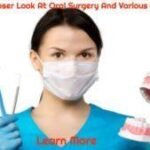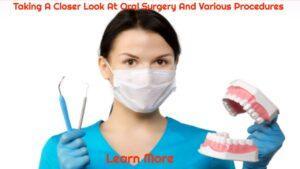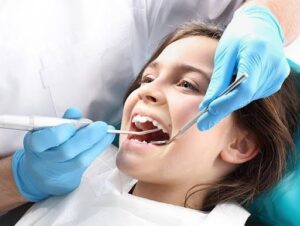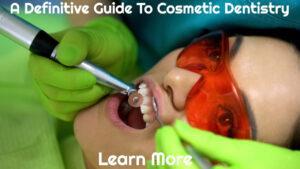Your cart is currently empty!
Category: Health & Wellness
-
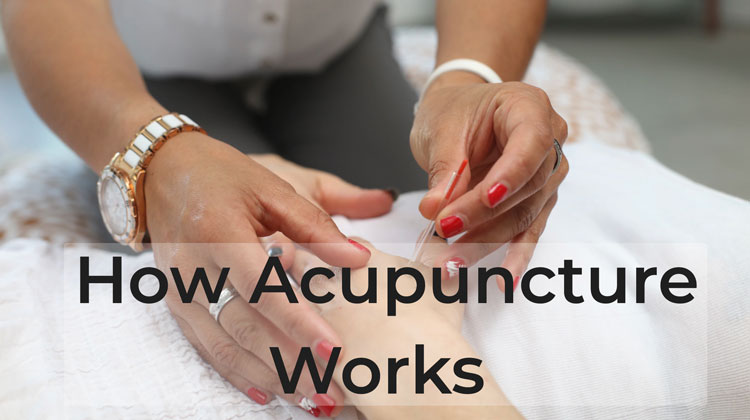
How Acupuncture Can Help You Improve Your Health
What exactly is acupuncture?
It is a sort of holistic healthcare used to prevent and treat diseases, as well as to relieve pain and anesthetize patients before surgery. This practice, according to studies, started in China and has been practiced for over 5,000 years.
The book Nei Jing, which translates to the Yellow Emperor’s Classic of Internal Medicine, contains the first account of this. The contents of this book date from circa 200 BC. They didn’t utilize metal needles to treat patients back then, instead opting for stone needles, moxibustion, and herbs.
Acupuncture is a disease prevention and treatment procedure that includes putting extremely thin needles into the skin at precise anatomic sites on the body.
The core premise is that illness results from an imbalance in your vital force, often known as Qi. This is considered to pass through 14 meridians in the human body, which branch out to organs and functions. If any of them become blocked or obstructed, you will become unwell or die.
The imbalance in Qi can go either way due to Yin and Yang. A person can only be normal if the two are in sync, which is what acupuncture attempts to do. This can only be repaired by stimulating specific acupuncture points, which will correct, balance, and harmonise your Qi.
Acupuncture Instruments
Aside from needles, practitioners use friction, heat, electromagnetic energy impulses, and pressure to balance the flow of energy in the body and improve one’s health.
Sonopuncture is one example of this, in which an ultrasound instrument distributes sound waves to certain spots on the body. A tuning fork and other vibration instruments are used by some people.
Another example is acupressure, which uses the fingers to ease the pain. This technique can be performed alone or in conjunction with other manual healing procedures.
Because our bodies create tiny electrical discharges that alter the function, growth, and maturity of specific types of cells, electromagnetic energy impulses are utilised. The body’s neurotransmitters are activated and altered by putting needles in specific regions, making the patient feel better following therapy. At times, this is also utilized for diagnosis and testing.
Acupuncture can be used alone or in conjunction with other treatments. According to the World Health Organization, acupuncture can help treat acute bronchitis, the common cold, cataracts, toothaches, gingivitis, hiccups, ulcers, constipation, diarrhoea, headache, and migraine, Meniere’s disease, osteoarthritis, and a variety of other ailments. Acupuncture is commonly used to treat chronic pain and mind-body issues in the United Kingdom.
What Do Acupuncturists Do?
The professional who performs acupuncture is known as an acupuncturist. Depending on the type, he or she may employ needles or other devices to attain harmony and balance in the body.
Before you may begin treatment, you must first answer a few questions. Following that, a physical exam will be performed to check your pulse and evaluate the shape, color, and coating of your tongue. The color and texture of your skin, as well as your posture, will be checked as these will reveal clues to your health.
Only then will you be asked to lie down on a padded examination table and have needles placed into your skin. These needles are typically thinner than a single human hair.
You might not notice them at all, or if you do, it will be a brief twitch. They will be left in place for 15 to 30 minutes, which may cause you to feel quite calm and tired, even to the point of falling asleep. When the session is over, the needles are removed and you are free to leave.
In certain circumstances, acupuncture is more effective when the needles are warmed. This practice is known as moxibustion. The acupuncturist lights a small bunch of the dried plant known as moxa or mugwort and places it on the needles. The herb, which burns slowly and creates a small amount of smoke as well as a nice, incense-like odor, will never come into touch with your skin.
Acupuncture with electricity is another method. The needles are attached to the electro-acupuncture equipment, and a little current goes through them, causing no or little feeling.
Where Can I Find An Acupuncturist?
When looking for an acupuncturist, be sure they are licensed. He or she must first finish three years of training at a recognized institution of oriental medicine before receiving one. The Association of Acupuncture Clinicians is one of the most prestigious registries in the United Kingdom.
There are a few questions you should ask an acupuncturist other than their credentials. You should be informed of the many types of acupuncture because some are more effective than others.
Another important issue to ask and discuss is how long the treatment will last. Clients suffering from acute diseases frequently observe improvements after three or four appointments. Chronic illnesses may require months of treatment before meaningful changes can be evident.
Acupuncturists, like doctors, are there to make you feel better. If you are not making progress with this person, you may need to seek the help of another specialist.
This article was brought to you by Keith Ferris Acupuncture
The post How Acupuncture Can Help You Improve Your Health appeared first on https://buydroppeddomains.com
The post How Acupuncture Can Help You Improve Your Health appeared first on https://wookicentral.com
The post How Acupuncture Can Help You Improve Your Health appeared first on https://gqcentral.co.uk
-
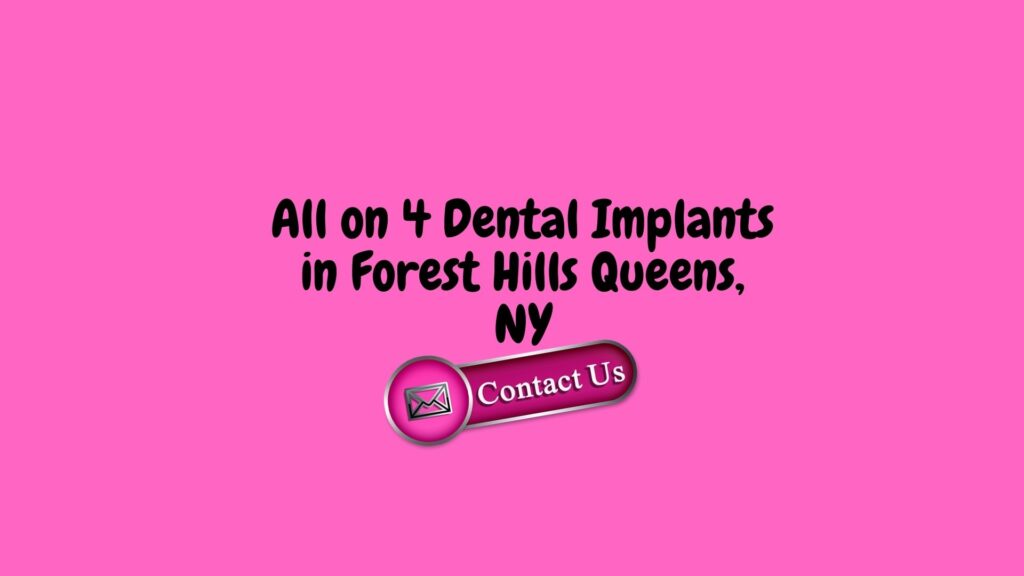
All on 4 Dental Implants in Forest Hills Queens, NY
All on 4 Dental Implants in Forest Hills Queens, NY
There are problems and challenges at every level. During an all-on-four implant operation, your natural teeth are extracted and replaced with a permanent, one-piece implant bridge supported by at least four dental implants. Every all-on-4 case does not go as easily or as quickly as you would like. Furthermore, there are numerous implant dentists to choose from. Everyone is not precisely the same. When it comes to completing mouth implant operations, some dentists outperform others. Implant dentistry for a largemouth is far more complicated than implant dentistry for a single tooth. Most dentists are unable to deliver this level of care in a single visit. Dental implant implantation can be just as difficult, if not more so, than oral surgery or implant insertion. For all mouth instances, a single dentist with substantial experience in implant surgery as well as full mouth crowns and bridges restoration is recommended. It is sometimes referred to as a “dental implant center.” The majority of dental implant clinics have a dental team on staff.
All-on-4 is a novel technique for people who have severe teeth decay or loss. With only four dental implants and a permanent, natural-looking implant Your oral surgeon will replace either the lower or upper arch of teeth.
Your dentist will surgically put the dental implant, which will be attached to the bone in your jaw. They are meticulously placed to ensure maximum durability and strength. Dental implants will need to heal for a few weeks before they can be inserted into the patient’s jawbone.
Dental implant-based tooth crowns, such as the All-on-4 treatment idea, are available at our state-of-the-art dental facilities in Boulder and Longmont, Colorado. Our primary oral surgeons will visit you during your consultation to review your oral health goals. You’ll be provided a personalized treatment plan, discuss anesthesia options, and have all of your worries and questions addressed to ensure you’re confident in your decision to have oral surgery.
There are numerous reasons why dentists and patients alike are pleased with the All-on-4. Because dental implant posts are merged into the bone of your jaw, the final dental prosthesis will be safe and durable. This implies that the dental implants operate as the teeth’s substitute root, stimulating the jawbone and preventing bone loss. The All-on-4 treatment provides the added benefit of accelerating healing and decreasing or eliminating the need for additional operations.
In the case of dental reconstruction, implant-supported dental procedures such as All-in-4 and Teeth Tomorrow may be the best solution for you. Make an appointment with a dentist who specializes in implant-supported methods to evaluate if you are a candidate. If you have removable dentures, you may need to address gum or bone loss before switching to a fixed implant-supported alternative. Your dentist will conduct a thorough evaluation to decide whether implant-supported therapies are appropriate for you or if another restorative approach is preferable. Today, visit the most recognized dentists in Queens.
1. What is the average lifespan of All-on-4 implants?
A number of factors must be considered while evaluating the lifespan of all-on-four implants. First, they do not arrive as a whole unit, and as such, while measuring their longevity, it is critical to consider each of the titanium screws that hold dental implants in place, as well as the dentures themselves. A second concern is that bad behaviors, such as smoking, can lead to outstanding teeth restorations that fail prematurely. The following factors influence the life expectancy of the four dental implants:
The implants are not accepted by the body. Dental implants, as well as organ implants, are subject to rejection. When you fear a dental implant will affect your health, your body may prevent it from fully integrating, forcing the implant to be removed prematurely.
Oral hygiene problems
A thorough oral care regimen is the most effective strategy to maximize the value of any dental implant. There are no exclusions when it comes to all-on-4 implant dentistry. Numerous studies have connected poor oral hygiene to peri-implantitis. It’s a sort of gum disease that makes it difficult for the titanium screws that keep the implants in place to properly adhere to the jaw.
Autoimmune illnesses are conditions in which our immune system attacks itself. They are the ones who have an impact on the immune system. Celiac disease, lupus, multiple sclerosis, rheumatoid arthritis, and type one diabetes are all examples of autoimmune diseases. A condition called as autoimmune causes the body’s immune system to target and injure tissue throughout the body, including the mouth, increasing the probability of implant failure.
The long-term longevity of your all-on-4 dental implants, as well as if you’re a good candidate for the operation, are all things to think about.
Implants usually fail within one to three months. A 10-year study involving 242 patients with four-on-four implants revealed two failures. In a different 5-year study, there were no issues at all. It’s worth noting that in all of these trials, proper dental care was a key factor in extending the longevity of all-on-4 dental implants. Understand why oral health is so important.
2. What are the disadvantages of having four dental implants placed all at once?
A failing implant occurs when the bone is unable to expand adequately within the screws, which is uncommon.
Some individuals had difficulty speaking after surgery. Because implant-supported bridges are hefty and thick, you may need to re-learn how to pronounce some phrases. The letters “D,” “N,” and “T” are all in the alphabet.
You’ll need to wear a mouthguard every night to protect your new teeth from grinding and clenching.
Because all-on-4 dental implants are expensive, you may wish to check into financing options.
A few patients have claimed that their gums hurt and that they had difficulties chewing for a longer period of time than expected, even up to one month after surgery.All-on-4 has an incredibly high success rate. Every method, however, has possible dangers and drawbacks. The most common concerns are nerve injury, infection, and gum damage.
Common All four scenarios necessitate considerable bone contouring to create a space in which the prosthesis can be implanted. There is also the possibility that the prosthetic teeth will shatter, especially if your bite isn’t precise. Consult your dentist if you have any questions or uncertainties about the location of your implant.
3. How much do the four implants cost in total?
The treatment is determined by the type of implant-supported full-arch restoration you select. This is a step-by-step tutorial on the All-on-4 procedure that will help you comprehend the procedure:
1. A thorough assessment of your teeth’s health and discussion of treatment choices. The dentist will decide on some aesthetic and functional components of an implant-supported denture, such as the length of the crown and the position of the bite, among other things. 3D imaging is used to assess the necessity for contouring anatomical structures involved in therapy, such as the jawbone.
2. Through the use of 3D photographs of your mouth Your dentist will develop a computer-generated simulation of the surgery that will identify exactly where the implants will be placed to offer the best support.
Phase 3 is followed by the surgical placement of the four implants. Temporary teeth are attached to the implants until they have adhered to the jawbone, at which point abutments are utilized to fix them. Additional treatments, such as tooth extraction (if necessary to allow for arch replacement) or bone shaping, can be performed at this time. During the six to eight weeks of recuperation, foods should be consumed with caution to avoid chewy or hard foods that may cause damage.
4. Following the completion of the osseointegration process, temporary implants are removed three months after they were inserted. The recovery process is usually quick and painless. Acrylic temporaries are replaced with cemented permanent dentures.
One of the most significant advantages of dentures supported by implants is the opportunity to visit a dentist’s office for an arch single or double replacement and leave with a natural-looking, reconstructed smile on the same day. Even though the “same-day” benefit only applies to the insertion of your implants and temporary acrylics, the procedure is nevertheless referred to as same-day smile reconstruction. Because there is no way to speed up the osseointegration process, the procedure will take several months to complete after the initial consultation. This is a very enticing concept, and it is one of the primary benefits of implant-supported complete arch therapy.
Your dentist must have the technologies necessary to create a 3D model of your smile. In order to give same-day service, they will also build temporary teeth. When selecting a specialist for your treatment, keep in mind that dentists have been improving their facilities to include the essential technology to give chairside dental services.
Many factors influence the pricing of All-on-4 implants and any other version. Some of these aspects include the location of therapy and any other therapies that may be required. (Those who require an implant or tooth extraction, for example, are likely to be paid more.) This is why the process of predicting costs can be difficult. One dental implant, on the other hand, can cost between $15,000 and $30,000. (Or even more). While you may not consider this a bargain (after all, that’s a lot of charges), it is far less expensive than a traditional arch reconstruction choice. It is more durable and provides far more dental health benefits than a more expensive detachable denture. Learn the fundamentals of depth scaling.
4. Are all-on-4 dental implants a good option?
Advantages:
When compared to natural teeth, it improves functioning by 90%. When compared to natural, it improves functionality by over 90% and removes the need for bone transplants.
On the day before surgery, it is usually fitted with a fixed bridge.
Soft and bone tissue are both protected.
Natural-appearing aesthetics
Allows you to eat the foods you prefer Ability to clean bridges that are supported by implants in the same way that natural teeth are cleaned
Duration in total (healing as well as permanent restoration procedure: 3 to 4 months)
5. What is the reason why some dentists recommend All 4 dental implants whereas others recommend five or six? Which one is most effective?
Furthermore, despite the expression “all on four,” it is far preferable to have 5 or 6 implants for a complete tooth set. It has a greater influence, and a minimum average score of 4 is required. Avoid any firm that claims to be able to complete your case in a single day.
The All-On-6 concept is a technique to add two implants to each arch, assisting in the retention of your hybrid prosthesis. This is especially advantageous for individuals with excessively long arches, as four implants can cause the final prosthesis to crack or fracture.
When comparing an All On-6 to an All-On-4, it is conceivable to spend $6,000 per arch. Because two more implants (along with prosthetic elements) are necessary to produce the functional denture, the All-on-6 option is often more expensive. More information on this can be found further down.
The All-On-4 approach uses dental implants that are slightly slanted on the outside. The cantilever effect is reduced, lowering the risk of hybrid denture breakage. The All-On-6 method makes use of parallel implants. Because two implants are positioned towards the back of the jaw(s), the cantilever effect is diminished, lowering the chance of a permanent prosthesis fracturing.
Lower and upper jaws are often replaced with an indefinite pair of hybrid dental dentures attached to implants. The price difference between All On-4 and All On-6 dental implants is one of the most significant. Because there are fewer implants, All-on-4 implants are less expensive. all-on-four implants typically cost $59,000.
In actuality, a full set of teeth can cost anything from $35,000 to $120,000, and the procedure can take up to a year. It is determined by the state of your jawbone and the need for subsequent surgeries like sinus lifts and bone grafts.
Because there are two additional implants, all-on-6 dental implants are more expensive. The cost of all-on-6 dental implants is between $40,000 to $140,000. The cost will vary according to on the dentist doing the operation, the amount to which additional methods are required, and whether or not your dental insurance will cover any charges. The Forest Hills Dentist is available at all times to help you with dental emergencies.
The post All on 4 Dental Implants in Forest Hills Queens, NY appeared first on https://wookicentral.com
The post All on 4 Dental Implants in Forest Hills Queens, NY appeared first on https://gqcentral.co.uk
-
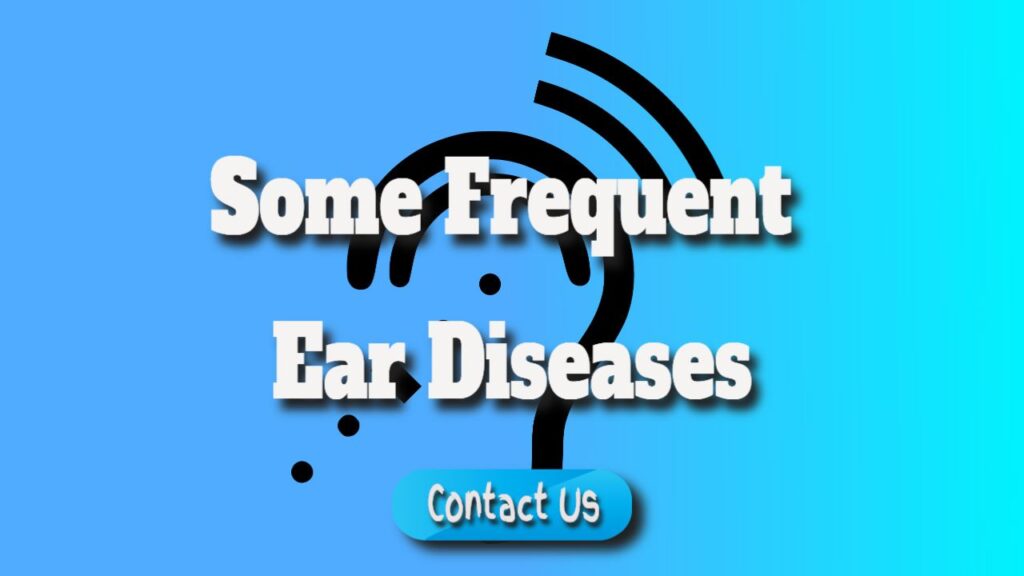
What Are Some of the Most Frequent Ear Diseases
What Are Some of the Most Frequent Ear Diseases
Although most people are aware of hearing loss, a variety of other disorders can also harm the ears. Some are merely an inconvenience, while others can be very painful.
Furthermore, these conditions can compromise your hearing and aggravate an already existing hearing loss.
It is vital to be aware of the conditions that can cause hearing loss. The following is a list of some of the most common ear ailments.
Swimmer’s ear
Swimmer’s ear, also known as otitis externa, is an infection that develops between the eardrum and the pinna of the ear (the part you can see on the side of your head).
Swimmers typically contract the virus when swimming lanes in untreated pools, thus the name.
Dirty water got into the ear canal and allowed opportunistic germs to flourish.
Their numbers grew out of control, and the body directed immune cells to the site, causing painful inflammation and swelling.
A swimmer’s ear, on the other hand, might affect anyone, especially after rigorous cleaning.
Solutions and alternatives
You will require pain and inflammation medication if you have swimmer’s ear (swelling). The ear expert will also clean the ear if there is a lot of fluid coming out of it.
Antibiotics may be prescribed by your doctor if he or she suspects you are sick. You may need to return to the doctor in a week or two to ensure that your swimmer’s ear has healed.
Center ear infections are a type of ear infection that occurs in the middle of the ear.
The disorder is known as the swimmer’s ear primarily affects the outer ear. Most ear infections, however, begin in the middle ear, which is the region between the eardrum and the cochlea.
Bacteria and viruses are among the germs that cause ear infections.
These invaders usually start in another part of the body. If you have a cold or the flu, you are far more likely to get an ear infection.
Viruses and bacteria can cause symptoms by making their way up via the tubes that connect the respiratory system to the ear. They then become lodged in the inner ear, causing irritation.
Ears clogged
Earwax is produced spontaneously by small glands that line the ear canal. This viscous, sticky fluid traps invading particles and bacteria, preventing them from entering the eardrum.
When it is working properly, it collects these particles and pushes them toward the ear opening, where they dry and peel off.
However, the body may occasionally produce an excessive amount of earwax. The wax then hardens and becomes trapped in front of the eardrum, making removal difficult.
Patients with clogged ears hear distorted and muffled sounds. Because earwax can no longer clear invading bacteria from the ear canal, secondary infections may develop surrounding the obstruction.
Ménière’s disease
Meniere’s disease is a condition caused by an excess of fluid in the inner ear. When the mechanisms in the ear get saturated, they can no longer function normally.
As a result, hearing and balance problems develop, as well as a sensation of pressure in the ear.
Meniere’s illness has no known cure. Changes in lifestyle, on the other hand, can assist to minimize the severity of symptoms.
To improve symptoms, ENT specialists usually urge their patients to take medications, reduce stress, exercise more, and explore alternative treatments. Surgery is only used as a last option in the most difficult cases.
Otosclerosis
Otosclerosis is a condition that causes abnormal bone growth in the ear.
The ear is a complex mechanism that converts incoming sound waves into nerve impulses via many methods. The stapes bone, a tiny bone, is involved in this system. Normally, this bone may move freely in its pocket to relay information.
However, in people with otosclerosis, it can become so large that it becomes immobile. When this happens, it is no longer able to transmit incoming sound signals to the inner ear.
There are typically two treatment options for otosclerosis. The patient is advised to wear a hearing aid or have surgery to reduce the size of the bone.
A stapedectomy is a surgical treatment performed by ENT experts.
Variations in pressure
The ear is sensitive to changes in pressure. When the pressure inside the ear surpasses the pressure outside, discomfort can result.
Changes in pressure are not in and of themselves a sickness, but they are common.
Some people, for example, experience excruciating agony when flying. When the plane lands, the cabin pressure rises again, pressing on the ear, which is unable to adjust.
Divers and mountain climbers may have hearing loss and ear fullness.
Do you suspect you may have an ear problem? Contact Our Specialists at 0800 1 337 987 if this is the case.
Brought To You By – Ear Wax Removal West London
The post What Are Some of the Most Frequent Ear Diseases appeared first on https://gqcentral.co.uk
-

Teeth Cleaning in Forest Hills Queens, NY
Teeth Cleaning in Forest Hills Queens, NY
Cleaning your teeth is an underutilized technique that dentists use on a daily basis. According to multiple research findings, many people do not properly clean their teeth. Despite regular dental flossing and brushing, many people are uncertain of what is causing oral problems. The majority of the time, cleaning methods and routines can do more harm than good.
Dental cleaning is a procedure that removes the “buildup” on your teeth. The term “buildup” refers to more than only the food particles that humans expel on a daily basis. Tartar and plaque will continue to build upon your teeth no matter how hard you scrub them, and dentists must remove the buildup.
Regular tooth cleaning, often known as prophylaxis, is a well-known dental procedure. Special instruments are used to remove calculus plaque, stains, and calculus on the teeth’s surface above the gumline.
1. Dental Preventive Care
A proper oral hygiene practice is essential for maintaining the health of your teeth throughout your life. But there’s more to it. Dental health can have an impact on your entire health and vice versa. Dental procedures aid in the maintenance of good oral health. This is because of frequent dental exams as well as good practices like flossing and brushing. Maintaining the hygiene of your teeth should begin as soon as your infant is born and continue throughout your child’s life.
2. What Does Preventive Dentistry Entail?
If you maintain a consistent oral hygiene practice, you will be able to reduce or even eliminate the negative effects of
Periodontitis, cavities, gingivitis, enamel loss
Everyone benefits from good dental health. Children are among our society’s most vulnerable citizens. Dental sealants and fluoride treatments for children’s teeth can help prevent tooth decay.
Dental health is inextricably related to whole bodily wellness. The mouth can be an ideal environment for dangerous microorganisms to thrive. Cleaning your teeth on a regular basis might be advantageous to your general health.
Adopting proper oral hygiene practices at an early age will prevent you from dental caries, gum disease, and gingivitis later in life. Here are some of the most important factors of good oral hygiene:
Brush your teeth at least twice a day, preferably in the morning and evening. Brush your teeth with gentle bristles and fluoride toothpaste.
Floss frequently to remove food particles caught between your teeth.
After flossing, rinse your mouth with mouthwash to remove any remaining food particles.
Eat foods that include acids to avoid causing enamel damage to your teeth.
Do not smoke or use tobacco products because they can lead to oral cancer and other dental disorders.
When participating in specified activities, always sure you use a proper mouthguard.
If you often grind your teeth, talk to your dentist about getting a nightly mouthguard to keep your gums from sliding.
3. Exams by our Forest Hills dentist
Dental examinations are among the most in-depth inspections of your teeth and gums. The majority of patients, both children, and adults, should be examined at least once every six months. The main goal of these examinations is to keep your dental health in good shape. If dental health issues are not addressed promptly, the repercussions can be serious and unpleasant.
Dental examinations are often performed by both the dentist and dental hygiene professional. Although dentists can treat patients of any age, children are the primary patients who attend pediatric dentists. Dental experts who work with children have received dental training. Learn how to depth scale.
4. Treatment for Gum Disease Prevention
Gum disease, which can range from moderate bleeding gums to painful gum recession, is an issue that must be addressed as soon as possible.
Treatment for Gingivitis
Your dentist or dental hygienist will be given oral prophylaxis, often known as “prophy.” Plaque, calculus, and stains are removed supragingival (above the gum line) and subgingival (below the gum line) (below the gum line). It is also referred to as professional cleaning.
Brushing twice a day for two minutes at a time, flossing at least twice a day, and visiting your dentist on a regular basis will help you keep an attractive, healthy smile. Today, pay a visit to the best dentists in Queens.
Treatment of Periodontal Disease (Slight to Moderate)
At this point, the infection has progressed so far into the tissues that flossing, brushing, or even just brushing is insufficient to treat it. In this case, the dentist may be able to perform a noninvasive operation called scaling and root planing (SRP or short). When your dentist “scales” your teeth, they remove periodontal toxins from your pockets. The dentist smoothes the surface of your gums to aid in the reconnection of your gums. This procedure is also known as “root planing.”
An SRP, also known as a thorough cleaning, is a process that can be completed in one visit. However, depending on the level of intensity, it is usually separated into one-quarter (one-quarter of mouth) or half-hour sessions.
Treatment of Advanced Periodontal Disease
Regular SRPs, dental appointments, and a balanced eating plan are all recommended to maintain general dental hygiene. Additional treatments may be required if gum disease has advanced to stages III or IV.
The Flaps were operated on.
At this point, the supporting tissues and bones have been severely damaged. The purpose of surgical flaps is to reduce the size of periodontal pockets and regenerate PDL fibers.
After an injection of numbness with an anesthetic topical, the dentist will make an incision that looks like an opening in the flap of your gums. The flap is subsequently closed with a seal, allowing the gums to remain within the mouth. The gums are then pulled back to completely clean the inflammatory-affected tissues. The healing process will then commence.
There will be fewer pockets after the treatment, making it easier to keep your mouth healthy. Maintaining the health of your mouth with a combination of expert care and frequent home maintenance will help you avoid reoccurring infections.
Transplantation of Bone
If you lose your teeth due to gum disease, the bone that surrounds them will also go away. Because there is little support in the area, your skin’s elasticity is diminished, making you appear older.
On the plus side, bone grafting can help to repair bone loss caused by gum disease.
In this operation, the dentist inserts a prosthetic bone that works in tandem with your body’s inherent regeneration capacity. Tissue-stimulating growth factors (TSGFs) are proteins that can assist your body in the formation of bone.
If you have exposed teeth, your dentist may advise you to have an organ transplant. After a successful bone graft procedure, the healing phase varies from patient to patient. It may take 4 to 6 months to complete. The Forest Hills Dentist is available 24 hours a day, 7 days a week to help you with dental emergencies.
Pinhole Surgery
Certain experts feel that pinhole surgery can help gum tissue flourish. This is a new procedure with promising preliminary outcomes. The technology is still in its early stages and may not prove to be a viable long-term solution.
5. Dental Hygiene with our Hygienist
A dental examination begins with a physical examination performed by a dentist. The dentist will use microscopic equipment to examine your teeth. Following that, the teeth and gums are checked.
Scalers are used by dentists to remove plaque and tartar accumulation from the gums. As is usual, the removal of tartar and plaque from the gum line may be accompanied by scraping sounds. The more tartar you have to remove, the more scraping you’ll have to do to get rid of it. Dental flossing on a regular basis is an effective approach to preventing tartar buildup.
The process of Flossing The practice of flossing can be described as a technique employed by dentists to eliminate tiny particles that could be floating around in the spaces between your teeth.
Rinsing the mouth The dentist advised that you rinse the mouth using water to eliminate any buildup of pollutants.
Therapy with Fluoride The fluoride treatments will be offered in the flavors of your choice like strawberry or mint. The fluoride is then put inside the mouth.
6. The Benefits of Preventive Dentistry
Preventive dental checkups can assist your oral health in the following ways:
- Reduces the likelihood of developing gum disease or other major dental disorders.
- Encourage daily dental hygiene practices such as flossing and brushing.
- Early diagnosis of dental disorders may lower treatment costs.
- This enables your dentist to conduct comprehensive examinations of your mouth, neck, and jaw. It lowers the likelihood of acquiring dental problems as a result of several chronic medical
- diseases. Osteoporosis, diabetes, other illnesses, and food-related concerns can all have an impact on general dental health and teeth. Patients with chronic conditions require preventative
- dental care on a regular basis to protect their overall health.
7. What We Look For When Taking Routine Dental X-Rays
Dental xrays can reveal information on the state of your teeth’s enamel and the inner chambers of your mouth, among other things. While oral exams are a vital aspect of your dental exam, dental x-rays allow dentists to “fill in the gaps” and see what their eyes cannot.
The Article Teeth Cleaning in Forest Hills Queens, NY First Appeared ON
: https://snopug.orgThe post Teeth Cleaning in Forest Hills Queens, NY appeared first on https://gqcentral.co.uk
-
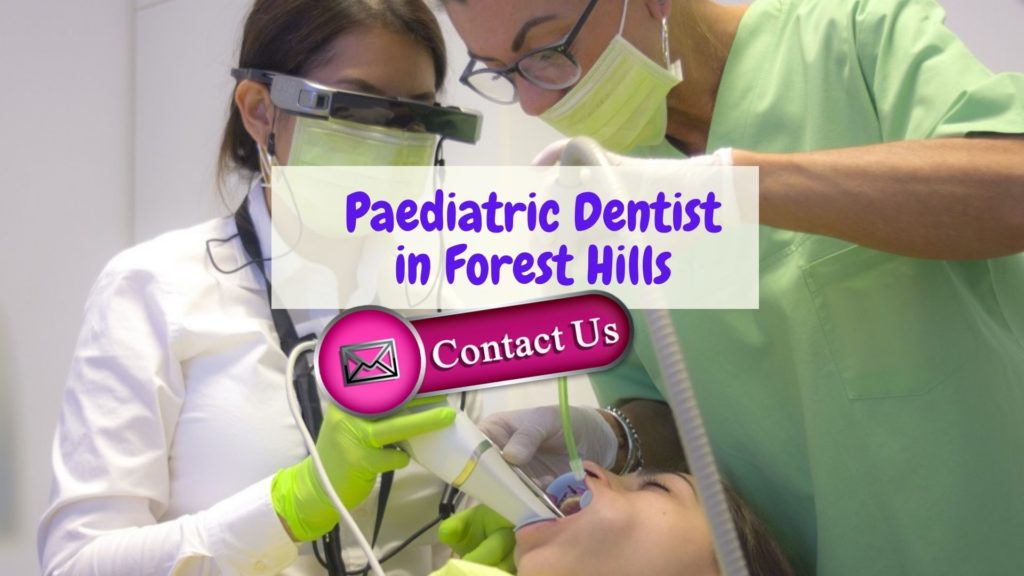
Experienced Dentist in Queens, New York
Finding an Affordable and experienced Dentist in Queens, Forest Hills, New York
Crowns are caps with tooth-like features that are placed on natural teeth to improve their appearance and stability. Crowns are typically indicated for teeth that are broken, cracked, damaged, or improperly made. Crowns are also utilized in dental operations such as implant bridges for root canals and tooth roots.
The gums form in such a way that the tooth’s surface appears after the crown has been lengthened. In some cases, the surgery may be associated with minor alterations in bone structure.
Whatever the reason for lengthening the crown, a big tooth stands out from the gum line and has a lovely appearance. Crowns that are properly set can assist enhance your teeth’s overall health as well as their looks and comfort. They make it possible to fit dental crowns in a safe and fast manner.
It is difficult to locate a low-cost Dentist. It is difficult to locate a cheap dentist in Forest Hills, New York City. As a result, it is critical to conduct your own research to obtain the greatest price. Although the majority of dental dentists charge a fee to use their facilities, you can usually locate dentists who accept most insurance policies for a modest fee. Finding a low-cost dentist is not difficult; however, you must ensure that the practice you choose accepts your insurance plan.
Discount dental plans are the most effective way to identify the cheapest and most reliable dental practitioners in Queens, New York. These programs may minimize your expenditures for all dental treatments by 10% to 60%. You can choose a discount plan that matches your demands if you’re looking for regular dentists in Manhattan or an aesthetic dentist in Forest Hills. These plans also allow you to visit other participating dental providers. While looking for a low-cost dentist, keep in mind that you can still obtain high-quality care.
Why Is Dental Health Important?
According to research, oral hygiene is an important factor in general well-being. Gum disease is a relatively frequent issue caused by bacteria that live in the mouth. Other complications of the illness include leukemia, diabetes, and pancreatic cancer. If you are not diligent about their dental health, they may be prone to getting other systemic problems. Regular treatment not only protects against the unpleasant consequences of oral disorders, but it also protects general health. In fact, it has the potential to lower the cost of hospitalizations and chronic diseases.
Dental health, in addition to being closely related to overall well-being, can also have a positive effect on overall well-being. The mouth is simply a small part of the body. As a result, keeping it in good health is beneficial to general well-being. According to research, people who have periodontal disease are more likely to acquire heart disease. Furthermore, those with the syndrome are twice as likely to die from cardiac disease. Finally, dental care can help you live a healthier life.
Patients who are ill or who suffer from other chronic conditions are encouraged to see a dentist on a regular basis. Patients with these diseases frequently have dental problems. Eating disorders and cancer are two other illnesses that might cause mouth difficulties. Dry mouth is one of these problems, and it can have catastrophic consequences. If you are experiencing any of these symptoms, it is critical that you see a skilled dentist as soon as possible.
The Root Causes of Dental Issues
There are numerous causes of dental problems. Many of these problems are caused by gum disease and tooth decay. The most common reason is the result of poor oral hygiene, which can promote the growth and survival of bacteria. Illnesses and chronic disorders are other potential difficulties. Genetics could have a role. Patients who are predisposed to dental disorders should seek treatment from a dentist.
Gum problems and overcrowding are among the top two frequent dental issues. The overcrowding of teeth causes them to shift and cause teeth to fall out of their place. It can result in other teeth having to move out of position. This could lead to frequent dental issues. It could also cause gum disease which can be a frequent dental issue. If you are experiencing any of these symptoms it is important to see an experienced dentist immediately.
The tooth enamel gets weakened due to acidic plaque that is able to get in it. The resulting erosion leaves little holes within the enamel. This is the initial stage of a cavity. When this happens, bacteria and acids eventually get to the dentin, which is soft and more susceptible to acid. Dentin has nerves that may be sensitive, which means any issue here could result in more severe issues. If this occurs then you’re likely to have a cavity that will require assistance from a dentist. Find out more information about the four teeth implants.
The Signs of Dental Problems
If you notice your teeth are slipping or have a strange odor If you notice that your teeth are loose or have a strange smell, visit the dentist as soon as you notice it. The bleeding gums could be an initial indication of gum disease or gingivitis. Or they may just be the consequence of a new routine of flossing. If you notice the gums have started bleeding it is best to make an appointment with your dentist right away. Additionally, sores and bleeding on your teeth can be indications of a problem so don’t dismiss these symptoms.
Another frequent symptom of dental issues is gum disease. The inflammation of gum tissue is an indication of the development of an abscess. This condition can be easily identified by dental professionals. The dentist may also recommend you to a physician if you experience other signs. Your dentist can help you deal with the signs of dental issues and help prevent future problems. If you’ve experienced any of these symptoms then it’s time to see your dentist as soon as possible.
The tenderness and pain that you feel in your mouth are typical indications of tooth decay. These ought to prompt you to visit your dentist in the earliest time you can. The pain in your jaw is a sign that you have an abscess. It is a kind of infection and the pus may extend to the bone of your jaw. This can cause severe discomfort and swelling and may result in bad breath. A qualified dentist can determine and treat the issue and recommend you to other medical specialists if needed.
Treatments for Dental Problems
The treatment options for dental problems vary from fillings to extractions. In some instances, tooth decay can be caused by grinding your teeth in the evening or by eating hard food. When you visit the dentist your dentist will check for signs of cracks in your teeth, and then apply dental dye to determine whether they’ve developed. Dental cracks can require multiple treatment options, based on the extent of the damage. Sensitivity to the tooth, also known as sensitization to cold or hot food items, is a different issue. When the enamel on your teeth has worn away, the substances from food and drinks may reach the nerves inside your teeth, causing discomfort and pain.
To fight tooth decay dentists employ two ways to get rid of tartar and bacteria. With a nonsurgical approach that removes the bacteria from the tooth’s root. When a surgical procedure has been performed an infection of the gums is treated and the tooth’s roots are repaired. A surgical procedure is when an element of bone is placed in the tooth’s space. This procedure has many advantages. However, it comes with an increased risk of getting sick.
A few of the most commonly used treatments are root canals and the grafting of soft tissues. In general, these procedures involve removing a small number of tissues from another area of the mouth and then grafting it into the tooth’s root. The outcome of the procedure will depend on the extent of the condition as well as the hygiene of the patient and smoking habits. Alongside the grafted tissue, treatment options for dental issues include regular dental checkups and proper dental hygiene. When an infection does happen the dentist can prescribe antibiotics. This could take as a mouthwash or gel that is placed on the teeth during the procedure.
Prevention of Dental Problems
The most effective method to avoid dental issues is to eat an appropriate diet. Avoiding high-carbohydrate and sugary foods is vital to maintaining dental health. Consuming foods that are calcium deficient can increase the risk to develop gum disease and loss. Dental issues can be painless initially and you might not even realize you have an issue until you see an ongoing cavity. Regular visits to the dentist are vital for your overall health and are recommended each six-month period. Alongside regular cleanings, dentists will also look for signs of oral cancer, and look for growth and growth.
Maintaining a healthy and clean mouth is crucial to preventing dental issues. Brush as well as floss at least twice every day. It’s recommended to avoid eating hard, acidic food items. Also, you should stay away from smoking, which could cause dental cavities and other issues. Apart from smoking cigarettes, abstaining from eating tobacco products can shield your teeth and gums from a variety of diseases. It is important to stay clear of these products to ensure you’ve got an attractive, healthy smile for the rest of your life.
A good oral hygiene routine is vital for avoiding dental issues. A healthy diet is vital to ensure the good health of your teeth. When you clean your teeth two times each day and floss them every day, you will be able to protect your teeth from decay. Also, avoid hard and acidic food which can harm your teeth. Additionally, stay clear of tobacco products as they can cause cancer as well as dental issues. A nutritious diet can help stay clear of these issues and maintain your teeth in good condition.
The causes of cavities
Cavities are a typical issue for children as children are frequently exposed to food that contains sugars and carbohydrates. This results in the formation of a sticky film on the teeth. This is later attacked by oral bacteria which releases acid that causes tooth enamel to be eroded. In time, this degeneration may cause pain, inflammation, or even loss of teeth. This is why it is crucial to understand the causes of tooth decay and how to avoid the development of these. Find out more here.
One of the most common reasons for cavities is tooth neglect. The lack of regular brushing, the absence of using mouthwash, and flossing can all be signs of decay. Additionally, eating acidic or sweet foods can damage enamel. Therefore, it’s essential to maintain proper oral hygiene practices. It is recommended to visit an appointment with a dentist at least twice each year. Going to your dentist at least every 6 months can assist you in identifying any issues in your teeth and then make the necessary steps to correct the issues.
A lack of oral hygiene is one major cause of tooth decay. People who have poor oral hygiene might not have enough strength in their saliva gland that can keep the acid level at a safe level. Dental decay can be caused by several factors. The bacteria feed on sugary and processed food items in the mouth. These food items feed the bacteria that cause tooth decay and create acidic waste. Dental decay can take time to develop and is caused by inadequate oral hygiene.
Cavity Treatments
If you’ve got cavities, the first step towards treatment is to set up appointments with your dental professional. Dental checkups should be scheduled every two years, but you can choose the frequency of visits. A cavity that is detected early is vital because it can be treated without needing drastic actions. If you practice good oral hygiene, you will reduce the risk of developing cavities at. This will relieve you of the worry and stress that comes with a cavity.
Treatment for cavities is crucial in order to prevent suffering from tooth discomfort. If you do not seek the treatment you need, your tooth will only become worse and not be able to heal itself by itself. A dental procedure can help to restore the structure of your tooth and ease the pain caused by it. The majority of root cavities occur in seniors and older people since the gums tend to recede leaving the surface of the tooth exposed. A mixture of acid and sugar in the mouth can cause dental decay and pain.
Cavity treatment is essential for preventing the formation of a toothache. Dental professionals can spot the presence of a cavity during an examination and begin treatment. The dentist can examine your teeth for any cavities by looking them up as well as rubbing them against them and then taking x-rays to determine the location of the cavity. Nearly all Americans will experience one at some moment in their lives. Gums that recede are more prone to developing these kinds of cavities.
How to Avoid Cavities
The best method to prevent cavities is to ensure proper oral hygiene. The oral bacteria are able to interact with refined sugars as well as fermentable carbohydrates to create acid. Acid is damaging to teeth and encourages dentin demineralization, which exposes the teeth. When teeth are damaged, they can be chipped or cracked. If your gums receding it could expose the roots of your tooth. Utilizing a mouthwash containing fluoride could lower the chance of developing dental cavities.
When you allow carbohydrates to remain over your tooth for a long time before they are removed, they can cause cavities. The tiny holes grow over time and eventually penetrate the nerves in the tooth, which can cause a significant amount of pain and discomfort. To avoid tooth decay, begin by reducing the time your child consumes food at every meal. The American Academy of Pediatrics recommends restricting the consumption of fruit juice to between one and two glasses daily and refraining from serving the juice to toddlers or infants following meals. It is also essential to stop night-time feeding as quickly as possible. If your child isn’t eating food for long periods of time, consider substituting food items that are protein-rich for snacks like crackers.
The most common cause of cavities is the intake of sugary and acidic food items. The best way to stop this is to reduce the number of sweet foods and snacks included in your child’s diet. In the ideal scenario, children should not eat any food between meals. This will give the teeth time to heal their own. If your child is already suffering from cavities, you should consider getting them filled and taken care of. The first thing to do is to stop cavities. If you’ve already had cavities, you need to be aware of ways to avoid future instances.
The post Experienced Dentist in Queens, New York appeared first on https://wookicentral.com
The post Experienced Dentist in Queens, New York appeared first on https://gqcentral.co.uk
-
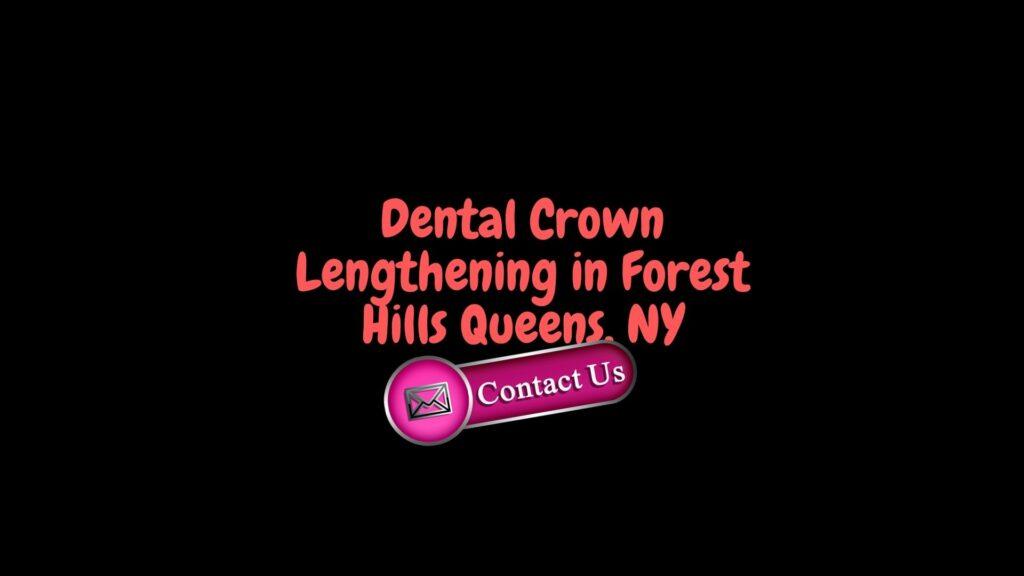
Dental Crown Lengthening in Forest Hills Queens, NY
Dental Crown Lengthening in Forest Hills Queens, NY
Crowns are tooth-shaped crowns that are placed on natural teeth to improve their beauty or stability. Crowns are typically advised for teeth that have been damaged, cracked, or broken, or that have been improperly built. Crowns are also utilized in dental operations such as root bridges, dental implants, and canals.
Following a crown lengthening treatment, the gums are shaped such that the tooth’s surface is visible. In some cases, the surgery may result in small alterations in bone structure.
Whatever the reason for crown lengthening, an essential tooth is more visible in the gum line and has a more appealing appearance. Properly placed crowns can improve oral hygiene as well as comfort and aesthetics. They allow for the safe and successful implantation of dental crowns.
What is Crown Lengthening??
Past dental work or dental work teeth might appear little or disguised by gums due to tooth decay or as a result of inheritance, previous dental work or dental work teeth can appear tiny or obscured by gums. By expanding the crown, you can lengthen the tooth and create a larger area for the crown to attach to. Furthermore, it aids in oral care and highlights the appearance of “gummy” toothlessness.
Throughout the crown lengthening procedure, the gums must be intensively worked on. Bones must sometimes be removed as well. The gums are then sealed, and in some cases, an elastic bandage is employed.
The process of crown lengthening may be required for a variety of reasons. The following are the most common reasons:
1. Tooth repair If your teeth aren’t strong enough to sustain the restoration or fill implants, you’ll need to have the size of your crown increased.
These are some of the most common scenarios:
If your tooth breaks along the gum line, you’ll know it’s broken.
When your dental crown is separated from your tooth, there is likely to be a hole under your gums. Deep dental cavities might be discovered beneath your gums. During the day, learn the fundamentals of teeth.2. Improving the look of your smile The gums only cover a little area of your teeth, but they are nearly undetectable when you smile. Certain people, on the other hand, have gum pockets around their teeth, particularly the upper teeth. It’s obvious when they smile. Among dentists, it is referred to as the “gummy” smile. Gums that do not appear to be totally straight can be straightened. Certain people may wish to lengthen their crowns in order to improve the appearance of a “gummy smile,” which occurs when the gums cover the teeth when smiling.
What Are the Advantages of Crown Extension?
It will offer you a balanced and even smile. Furthermore, crown enlargement may be beneficial to your oral health.
It reduces the likelihood of tooth decay by increasing the area of your tooth that is cleaned and flossed.Preparing for Treatment
Temporary crowns can be provided by your Favorite Dentist Queens until you are ready for the operation. The temporary crown may safeguard your patients’ teeth and make it easier for you to receive your permanent crown at this time.
Before you can begin treatment, you must first schedule an appointment with your periodontist. The periodontist will review your medical history and show you some images to refer to throughout your session. It is critical to inform your doctor about any drugs you are presently taking, as they may advise you to cease using any of them prior to your treatment owing to the possibility of bad side effects.
What options are available during the procedure?
Periodontists (gum specialists) are experts in crown lengthening. X-rays are used to determine the outcome of their tests. They will conduct an oral examination to determine the following:
- The anatomy of the tooth is lengthened through the crown lengthening process.
- The types of teeth as well as the root of these teeth. The position and the location of roots. The moment at which a single root is split into two. Multiple roots can be seen in a number of teeth, such as the molars.
- Soft tissues comprise the facial anatomy and facial muscles, as well.
- Its length is determined by the gingiva.
- The length of the bone is interdental.
- The quantity and quality of bone present in dental spaces.
During the procedure, most patients are given a local anesthetic. Certain patients, on the other hand, may require a different sedative. The gums will be removed from the teeth, exposing the bone and root. In other cases, the gums may not be entirely removed. There is a chance of discomfort once the local anesthetic wears off. To aid in the healing of the gums, the doctor may prescribe pain relievers as well as a special mouthwash.
To reduce the risk of infection after surgery, you will almost certainly need professional dental cleaning prior to the treatment. The total time required for the procedure is dependent by the number of teeth that require crown lengthening.
The steps to follow are as the following:
- You will receive an injection of local anesthetic prior to when the procedure begins.
- The degree of separation is dependent on how big the tooth has extraction.
- The dentist must cut through the bone that is around the roots of your teeth in the majority of cases. However, the dentist might require exposing the roots in certain instances to ensure that crowns are put in the correct place.
- The tooth exposed is washed with a solution of saline with the help of the dentist.
- The dentist will then join your gums. The dentist may also give you an elastic bandage to assist in the healing of your gums.
- Dental specialists apply temporary crowns, giving mouthwash and painkillers. Contact your nearest emergency dentist in Queens.
Aftercare and Recovery
- It is critical to maintaining a healthy diet.
- Ice the area of the face where the gum surgery was performed. This may aid in the reduction of swelling and bleeding.
- When brushing your teeth, avoid touching your gums. Toothpicks or an irrigation device can be used to remove food particles caught in your gums.
- Within 7-10 days, see your dentist. Only if your gums are healing nicely should the dentist remove the stitches (if there are any).
- Return to your dentist to schedule a four to the six-week follow-up appointment.
- Your gums will begin to shrink once they have healed and are recovering. If you don’t wait long enough, the edges of your crown may begin to appear
- when the gingiva recedes.
- The recovery period for this operation is roughly three months. You can resume to your normal routine after your gums have healed and regenerated.
- You simply need to limit your physical activities for the first two to three days. Heavy lifting or strenuous exercise may impede healing and cause bleeding.
- Discuss the specifics of your treatment with your doctor. In general, you must adhere to the following rules:
- Make use of either prescription or over-the-counter drugs. If you follow the aftercare guidelines, you will most likely be given Ibuprofen as well as Tylenol. You could also go to a Cosmetic
- Dental Clinic.
- Apply an ice compress to the affected area. Applying an ice pack to your face for the first few hours after treatment can help to reduce swelling. After 20 minutes, you can alternate between
- using the ice pack and not using it. After a few days of treatment, you can switch to warm water.
- Eat hot foods for the first 24 hours. Also, refrain from washing your mouth. If the bleeding persists, apply pressure to the afflicted area for 20-30 minutes with an ointment-soaked tea bag or
- moistened gauze.
- The dressings must be applied for 7-14 days. Doctors can replace the dressing at least once in the next 7-14 days.
- Dentures, or stents if you already have them, should be worn. If the stent is not colored or transparent, it should be removed for at least 24 hours. The directions mentioned the denture.
- There is a 24-hour window to re-set it the way you want it. If your mouth is swollen and filled with blood, rinse it with salted water and Chlorhexidine without removing your denture or stent.
- Eat a light diet. Keep eating away from the surgery region. Foods that are hard and brittle, as well as those that are sticky, acidic, or hot, should be avoided. Nuts and seeds with little seeds should be avoided. Drink plenty of fluids.
- Don’t drink alcohol until after the post-surgery treatment: Don’t drink alcohol until after the post-surgery treatment.
- Stop smoking cigarettes for at least the first seven to 10 days.
Do not apply pressure to the region with your fingertips. While inspecting the region, do not draw your lips back because the pressure could cause harm. Use straws sparingly and avoid fumbling with your finger or tongue near the surgery site.
The post Dental Crown Lengthening in Forest Hills Queens, NY appeared first on https://capsure.net
The post Dental Crown Lengthening in Forest Hills Queens, NY appeared first on https://wookicentral.com
The post Dental Crown Lengthening in Forest Hills Queens, NY appeared first on https://gqcentral.co.uk
-

Earwax Accumulation and Blockage
Earwax Accumulation and Blockage
The body produces cerumen, or earwax, to protect the ears. Earwax is both lubricating and antibacterial.
Untreated buildup can result in hearing loss, discomfort, ear pain, dizziness, ringing in the ears, and other problems.
Earwax can be removed in a variety of ways, some of which are doable at home.
What exactly is earwax?
The body produces cerumen, or earwax, to protect the ears. Earwax is both lubricating and antibacterial.
Chewing usually transfers old earwax through the ear canal, while the skin in the ear grows from the inside out.
When it reaches the exterior of the ear, it falls off.
Earwax forms on the ear canal’s outer surface rather than deep within the ear. Earwax is created by the combination of dead skin cells and hairs with secretions from two different glands.
What does it mean if your ears are filled with wax?
When earwax accumulates in the ear canal to the extent where it causes indications of a disease, this is referred to as earwax.
It is vital to recognize that the majority of people never need to clean their ears. Ears are designed to clean themselves. Cleaning your ears with cotton or hairpin swabs can cause damage to your ears, resulting in earwax buildup, which can lead to blocked ears.
This just serves to deepen the earwax buildup, raising the risk of irreversible ear damage.
What are the possible consequences of earwax buildup and congestion?
If left untreated, excessive earwax can increase the symptoms of earwax obstruction. There may be hearing loss, ear discomfort, and other symptoms.
Earwax buildup can also make it difficult to see into the ear, allowing possible problems to go undiagnosed.
Is the color of your earwax significant?
Healthy earwax comes in a variety of colors, each with its own meaning. Determine whether you have damp or dry earwax first.
Wet earwax is available in a variety of colors, including pale yellow, honey, and orange-brown. Wet earwax is quite sticky.
Dry earwax is usually white or gray in color and harsh in texture.
Darker earwax is older earwax in both cases. It’s dusty and has had more exposure to air.
You should consult a doctor if your earwax has transformed into a discharge, such as white or greenish pus, or if you notice it on your pillow after sleeping.
If you observe blood or if your earwax is black, you should consult a doctor.
The distinction between moist and dry earwax is another noteworthy element.
Wet earwax is more common in people of European and African origin.
Earwax of Asian, East Asian, or Native American origin is typically drier than other varieties. This has anything to do with genetics.
Those with wet earwax are also more likely to require deodorant. Dry earwax sufferers are weak in a chemical that produces a nice odor.
CAUSES AND SYMPTOMS
What are the symptoms of earwax accumulation and ear congestion?
The following are some of the symptoms of this illness:
There is a sensation of fullness in the ear.
The ear is in pain.
Hearing issues that could worsen in the future
Feeling a ringing in your ear (tinnitus).
In the ear, there is an itching sensation.
The presence of an odor or discharge from the ear.
Dizziness.
DIAGNOSTIC AND EXPERIMENTAL TESTING
Who is affected by earwax accumulation?
Earwax can affect anyone. Children and healthy adults are predicted to be hit by 10% and 5% of the population, respectively.
The following people, however, are more likely to be affected:
People who use hearing aids, earplugs, or earphones.
People with a lot of hair in their ears or with certain skin problems
Individuals who put cotton swabs or other objects in their ears.
Older people.
People who are still in the process of maturing.
Individuals with ear canals that do not allow for natural earwax flow.
Children
Earwax is produced by children. As long as they do not create significantly, be cautious when cleaning their ears. To wipe the outside, simply use a washcloth.
Don’t be alarmed unless your child exhibits earwax buildup symptoms.
Some of the symptoms include pulling or tugging on the ears, pushing items into the ears, and hearing problems. If this is the case, please contact your healthcare provider.
Elderly people
Earwax buildup may be an issue for an elderly person who wears hearing aids. They might even choose to ignore their hearing. Earwax can cause hearing loss, which should be treated.
How are earwax accumulations and blockages detected?
Your healthcare practitioner can use special otoscope equipment to peek inside your ears to see if earwax has formed.
TREATMENT AND MANAGEMENT
What is the best way to treat earwax deposits and blockages?
Earwax can be removed in a variety of ways. Some of these procedures are simple enough to do at home.
You can clean the outside of the ear with a handkerchief. Avoid squeezing the cloth and inserting it into the ear canal.
In the ear canal, cerumenolytic solutions (solutions that dissolve cerumen) can be administered. Among these alternatives are:
Mineral-derived oil.
Oil for infants.
Glycerin.
Hydrogen peroxide or peroxide ear drops (e.g., Debrox®).
A saline solution.
For these solutions, use an eyedropper to place a few drops in the affected ear and lie on the opposite side to allow the solution to drip into the affected ear.
You can also soak a cotton ball in the solution and place it over the affected ear, allowing the solution to seep in.
Another method is to irrigate or inject the ear. Using a syringe, the ear canal is flushed with water or saline solution.
This is normally done after the earwax has been loosened or dissolved with a cerumenolytic.
Finally, your healthcare provider may utilize special instruments to manually remove the cerumen. A cerumen spoon, forceps, or a suction device may be used by the healthcare provider.
If you have tubes in your affected ear or suspect that you do, you should see your doctor straight away (s).
What You Shouldn’t Do When Cleaning Your Ears
Suction devices for the home (such as Wax-Vac®) should not be utilized. They are ineffective for the vast majority of people and should not be used.
Ear candles, which are touted as a natural way to remove earwax, are a flop. Burns to the pinna and ear canal, as well as eardrum perforation, are among the possible effects.
PREVENTION
How can I keep earwax from building up and clogging my ears?
To clean your ears, do not put anything in them. Cotton swabs should only be used on the outside of your ear.
If you need your earwax removed more than once a year, ask your doctor what they recommend to prevent earwax buildup.
Keep in mind that earwax isn’t always a terrible thing. It will not infect your ears as a result of its use. Earwax, on the other hand, can cause problems by itching your ears and preventing you from hearing properly.
It is only safe to use droplets of water to clean the outside of your ears and soften the wax. Before using an instrument to remove earwax, always seek the counsel of your healthcare professional.
Brought To You By – Ear Wax Removal Bury st Edmunds
The post Earwax Accumulation and Blockage appeared first on https://gqcentral.co.uk
-
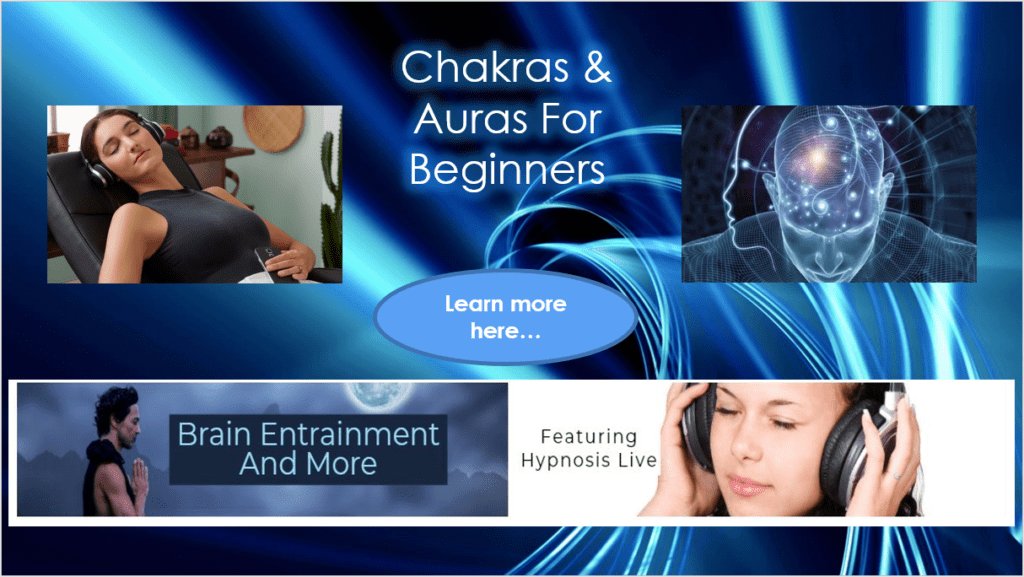
Introduction to Chakras and Auras – Fundamentals
After reading this Introduction to Chakras and Auras, you will have greater insight into these two fascinating areas of psychic and spiritual development!
Using Chakras and Auras to Develop Psychic and Spiritual Awareness
For this Introduction to Chakras and Auras, let us try and break up this article into two main parts.
Getting Started With Chakras
Chakras for Beginners is a wonderful place to start, especially if you’re brand new to chakras.
Chakras are essential for those who are on a spiritual and holistic path. But what are they, exactly?
There are specific energy places in your body. These locations are responsible for transferring and receiving life force energy in a spiral or circular motion. The term “Chakras” are the labels given to these energy centers.
There are two types of chakras: minor and major. Five minor chakras are divided into two groups, located between the palm of your hand and the shoulder. You will also find them between the foot and the arch of the pelvis.
The seven primary chakras are the most commonly discussed and key to life balance and spiritual vitality!
Vibrations Impact Chakras!
Sound and color vibrations have a powerful effect on the chakras. Each vibrates with a different hue and a different musical tone or note. Balancing your chakras is critical because your chakras function best when they are tuned, flashing brightly, open, and rotating smoothly — neither too fast nor too slowly. You may restore your chakras to their original levels of energy, brightness, and clarity by imagining the styles and colors of each chakra.
Let’s look under the microscope to view the seven most important ones. Like beginner meditation techniques, you will obtain a primary education in the important Chakras in an easy-to-understand format, preparing you for the next stage!
Key Chakras for Beginners Points
These seven primary chakras start at the base of your spine and align with it up to a unique plane just above the skull.
The ROOT or BASE chakra, related to the adrenals, is at the bottom. The BASE chakra represents your relationship with the soil and abundance, protection, and security. It has a crimson tint and vibrates at a middle C pitch.
The SACRAL chakra, located importantly within the region of the genitals, is the next. It has an orange tint and vibrates at a frequency of D above middle C. It is in charge of sensory pleasure, a sense of belonging, and passion.
The SOLAR PLEXUS chakra is higher up, directly over your belly button. The pancreas is its principal organ, and it is associated with identity, control, intuition, and self-healing. The solar plexus is yellow in hue and vibrates at E.
Here’s My Most Loved Chakra!
 The next chakra is my favorite, evidenced by the lovely green artwork — the HEART chakra! This chakra promotes love as well as the desire to be loved. Its primary color is green, but it can also be pink, and it vibrates at a frequency of F. Of course, it is the most crucial in my opinion; nevertheless, I may be biassed
The next chakra is my favorite, evidenced by the lovely green artwork — the HEART chakra! This chakra promotes love as well as the desire to be loved. Its primary color is green, but it can also be pink, and it vibrates at a frequency of F. Of course, it is the most crucial in my opinion; nevertheless, I may be biassed 
The THROAT chakra is number five on the list. It has a G vibration and is blue in hue. When open and tuned, this chakra encourages expression, communication, receiving, nurturing, and creativity, while when closed and tuned, it governs the thyroid.
The THIRD EYE, which is located on your forehead, comes next. It has an indigo color and vibrates at A. It promotes clairvoyance and clairaudience and is linked to the pituitary gland.
Finally, the CROWN chakra is the seventh chakra. It occupies the space directly above the top of your skull on a mental level. It might be violet, aquamarine, gold, or white in hue and vibrates at B. If you want to connect with your psychic and spiritual side, this chakra must be open and adjusted. This chakra is an energy point in and of itself because it represents your awareness level.
To complete this first part of our Introduction to Chakras and Auras, we must touch on the importance of balanced chakras and the associated spiritual energy.
Chakras Must Be Balanced to be Effective
When tuned and spinning, the chakras keep our mental, physical, and spiritual bodies in balance by sending and receiving life energy, also known as prana.
The chakra system is crucial to our emotional, physical, and spiritual well-being. We work with these energies in the hopes of integrating all elements of your life into a more holistic being. Everything in the universe follows a pattern. You will gain tremendous inner insight and purity as you move towards a common goal by activating that cycle.
Now that you understand the basics of chakras, what they do, and how they function, it’s essential to know that they don’t just stay spinning as they should indefinitely. Sickness, shock, trauma, and other things can cause our chakras not to rotate or shine as they should. They need to be tuned up and stimulated to keep them running well. In these situations, the skill of chakra stimulation comes into play.
Spiritual energy, derived from the chakras, is the foundation of every skill or ability you now possess. Our chakras are arguably the most crucial thing in our minds and bodies to develop since they serve as the foundation for all other development. People interested in Chakras are often also interested in the technique of perceiving auras! Chakra Stimulation is a centuries-old technique for increasing spiritual consciousness.
Brain entrainment Tech Can Help You Use Chakras and Auras!
You can employ brain entrainment technology to fine-tune and excite your chakras to their maximum operational level. Simply listening to these beautiful binaural beats and isochronic tones recordings will put your brain into a peak state position. It will act on all of your chakras at once in this state. Or even on each chakra individually, ensuring that they spin freely and shine brightly. This exciting technology can assist you in replicating the experiences of long practicing Yogis who have undergone profound spiritual advancement for many years.
Well done, you’ve done an excellent job so far! Beginner’s Chakras 101 is now complete and you are halfway through our Introduction to Chakras and Auras!
Introduction to Chakras and Auras Part 2
Welcome to the spectacular ability to see auras!
Our aura represents our True Nature, or the part of ourselves that we can’t hide. Seeing auras is a genuinely incredible ability that can support and assist you in various ways!
Auras are defined as an area or field that contains active electrical or magnetic lines, and it is possible to view auras. A light or aura surrounds all living animals, whether they are alive or not; nevertheless, living creatures, particularly humans, have the most extensive range of auras. As a result, so much more may be seen in one.
Seeing auras is innate in evolved souls and those with psychic powers. People and even animals can be trained in the art of observing their auras with appropriate training and practices.
The aura of a person provides a vivid story about the entire workings of their environment. Regardless of what a person may be telling or hiding from you, an aura’s varying hues and intensities reveal a lot about the physical and mental state of the human inside.
Begin your Auras training now!
As discussed earlier, you can train yourself to see auras; however, it will take some effort. These simple workouts are a great place to start!
Exercises for Seeing Auras
1) Instead of focusing on the entire body’s aura, begin by focusing solely on the person’s head. Please close your eyes and then slowly open them while looking at the head of the person whose aura you’re attempting to perceive. It will be easy to execute if your subject is in a well-lit place with a dark background.
After some effort, you should be able to see a variety of colors around the head. Your aura vision will expand towards the ceiling as your talent grows. The aura will open up with further development and practice, and the entire body will become visible.
2) In a well-lit environment, point your fingers towards each other, ensuring they do not touch while looking into a darkened background. Concentrate just on your fingertips, moving them vertically and horizontally.
After some practice, you’ll notice beams of light shooting out from your fingertips, interacting with the rays from your other hand, and moving as you move. You must not give up and continue practicing this talent until you can see the beams – this is perceiving auras!
3) Point your fingers towards a darkened background, ensuring sure you’re in a light region. Relax your entire body, clear your mind, and enter a meditative state of serenity and silence.
Look at the tips of your fingers with your eyes half-closed and try to notice light emitted from them, possibly in different hues! A word of warning, mastering this skill will take a lot of practice!
Once you’ve mastered seeing the light from your fingertips with your eyes half-closed, try it with your eyes fully open.
Once you’ve mastered the art of detecting auras
 Then you’ll have to figure out how to spot them. Silver and white auras signify good health, whereas a grey aura indicates disease. As the grey darkens and ultimately turns black, it suggests that the sickness is progressing rapidly. This alone is a massive advantage of being able to sense auras.
Then you’ll have to figure out how to spot them. Silver and white auras signify good health, whereas a grey aura indicates disease. As the grey darkens and ultimately turns black, it suggests that the sickness is progressing rapidly. This alone is a massive advantage of being able to sense auras.Spiritual people and those who meditate regularly have vibrant and bright auras that include purple, gold, green, blue, yellow, or perhaps a combination of these colors! The aura can be clear and distinct or hazy and hazy. Negative emotions can manifest in auras that are exceedingly energetic and jagged. Your capacity to see auras will significantly improve as you train and practice.
The activities listed above will undoubtedly aid your desire to see auras. Nevertheless, the upper Alpha frequencies of the brain frequently occur in bursts, making it challenging to develop accurate aura reading skills.
Looking For More Help with Chakras and Auras?
Beyond this brief Introduction to Chakras and Auras, the brain can develop these skills through intensive training and mind-numbing attention. But what if you, like the vast majority of us, find it challenging to maintain this level of sustained intense focus?
Fear not, since this is where brain entrainment’s great technology can help!
These specific recordings use the underlying technique of binaural beats mp3 and isochronic tones to lead your brain through the many states required, such as alpha and theta, to allow you to perceive auras!
The brain can be trained and put in a position that allows fascinating notions like these to become natural talents and qualities!
For more information about seeing auras and securing your recordings, please click the image below.
Visit our site at BrainEntrainmentandMore.com for so much more psychic and spiritual information, training techniques, and strategies. I do hope you have found this Introduction to Chakras and Auras article useful as an effective starting point.

The post Introduction to Chakras and Auras – Fundamentals appeared first on https://gqcentral.co.uk
-
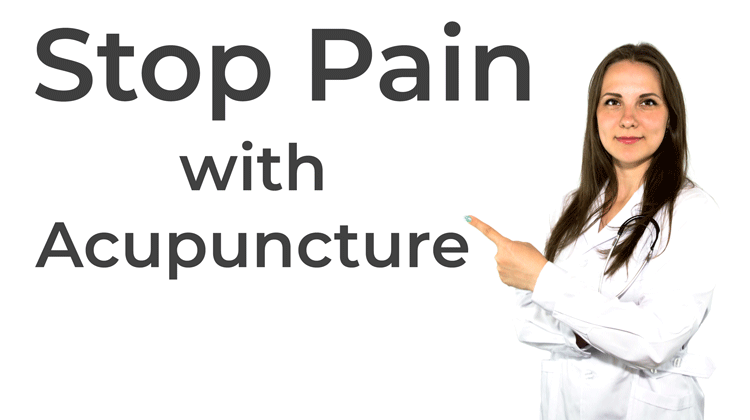
Acupuncture Tips That Will Help You Improve Your Health
Pain may be both incapacitating and life-changing. If you’ve ever felt pain from whatever cause, you know how devastating it can be. Daily duties become impossible to do, and concentrating on anything other than your discomfort becomes tough. If this sounds familiar, you might be interested in learning more about acupuncture, a pain-relieving therapy that has shown significant potential. Continue reading to learn more.
Your acupuncture treatment should be performed by a licensed expert. If you require a license or references, don’t be scared to ask. If you have any worries about your acupuncturist, cancel your visits and look for another doctor who appears to be more professional. Perform some web research to discover more about different doctors.
When seeking for an acupuncturist, make sure he is NCCAOM certified. This organization validates that the practitioner has completed the required education, internship, and exam. Without this accreditation, you cannot be certain of the practitioner’s degree of training.
When choosing an acupuncturist, make it important to inquire whether or not the practitioner is NCCAOM qualified. This certification demonstrates that the doctor passed an exam and completed an extensive program. While there is no assurance that the acupuncturist will be a suitable fit for you, it is an excellent starting point.
When looking for a reputable acupuncturist, it is a good idea to inquire around. Acupuncture makes use of little needles that are put into your skin without producing pain. As a result, it is critical that you locate a clean clinic. Visiting a filthy acupuncture office may result in the spread of an infection or sickness.
Do not expect to feel fully improved after your first session. As with many treatments, it will take several visits to obtain complete degrees of repair. Before giving up, be patient and give the treatment a chance. You’ll be glad you didn’t rush.
Do you need a caffeine fix on a regular basis? You might want to forego the coffee for a bit if you have an acupuncture session. As a stimulant, coffee stimulates sympathetic nerve activity. Acupuncture, on the other hand, seeks to accomplish the inverse. You don’t want to go head-to-head with yourself!
Make sure the acupuncture practitioner you hire is certified by your state’s health authorities to protect your health. Inquire whether they have been certified by the national board, completed the training program, and passed any relevant tests. Inquire about how long they’ve been practicing.
Following a series of acupuncture treatments, some patients suffer greater discomfort. This could, believe it or not, be an indication of healing. Their symptoms may increase at initially, but will gradually improve. Speak with your practitioner if things begin to go wrong, and see if there is anything you can do to aid in the healing process.
Avoid coffee and alcohol after you’ve done with the acupuncturist. These beverages dehydrate you, which is detrimental to your treatment. Toxins may be released as a result of acupuncture and must be flushed out of the body. Avoiding alcohol and coffee will stymie that process.
While bruising is unusual, it may occur as a result of your acupuncture session. It’s nothing to be concerned about, and there’s no way to know if you’re prone to bruising or not. It will happen to certain people, no matter how mild or successful the practitioner’s approaches are.
Be wary of sticker shock. Contact your insurance company before beginning any treatments. Insurance does not usually cover acupuncture. Many of them, in fact, will not pay for any sort of alternative medicine at all. Determine if this is the case for you before beginning your sessions. Otherwise, you might be disappointed with the cost in the end.
You should learn more about acupuncture. You’ve probably heard of it, and if so, you’re aware that needles are involved. But acupuncture is much more than that, and you should understand more about it before making any decisions. Remember, this is about doing what’s best for your body, so do your research.
It is acceptable to take a brief snooze throughout your session. It is acceptable to doze off. Meditating is even better, but it might be difficult to maintain this level of relaxation for up to an hour. However, you should draw the line when meditating or sleeping. There will be no reading or fretting over work or personal matters.
As you can see, there may be a solution for you to overcome pain’s devastating and life-changing impacts. For many years, acupuncture has been studied and has shown significant promise in the treatment of pain. Keep what you’ve learned here in mind as you hunt for a respected practitioner. You’ll soon be able to shift your attention away from your suffering and toward enjoying a full life!
This article was brought to you by: OrientalMedicine.co.uk
The post Acupuncture Tips That Will Help You Improve Your Health appeared first on https://buydroppeddomains.com
The post Acupuncture Tips That Will Help You Improve Your Health appeared first on https://wookicentral.com
The post Acupuncture Tips That Will Help You Improve Your Health appeared first on https://gqcentral.co.uk
-
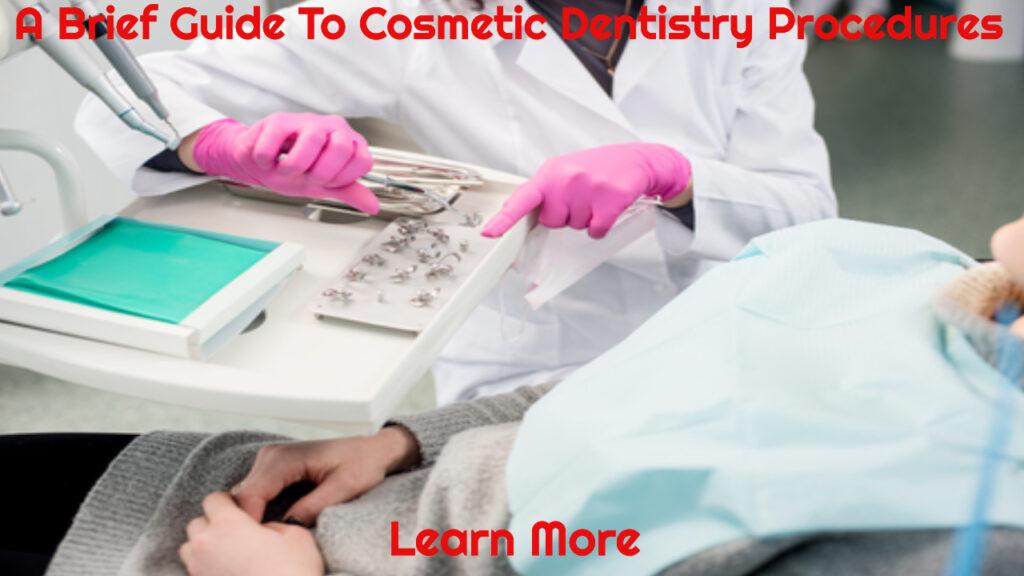
A Brief Guide To Cosmetic Dentistry Procedures
Cosmetic Dentistry – Procedures to Restore Patients’ Smiles
Dental practitioners provide a variety of therapies to restore patients’ smiles and improve their overall appearance. For example, cosmetic dentistry is a fantastic option for people who have teeth flaws that negatively impact their lives.
Breaks, cracks, and chips are frequent problems that people face throughout their lives. Cosmetic procedures can be excellent ways to repair damage and make teeth more visually pleasant. Furthermore, dental specialists provide a variety of aesthetic therapies to help people get the confidence they need to live happier life.
What Exactly Is Cosmetic Dentistry?
“What is aesthetic dentistry?” many dental patients wonder. Cosmetic dentistry refers to dental services performed by dental experts to improve the looks of a person’s smile and give them greater confidence. Many people experience a loss of self-esteem as a result of their teeth. As a result, they might have a negative impact on someone’s life and well-being.
Dentists who provide these services treat typical issues including misaligned teeth, tenacious stains, and serious damage. While most cosmetic procedures are considered elective, some restoration services are covered by dental insurance programs. They do not pass on the total cost to the client.
If a person seeks cosmetic operations, the dental practice can provide a detailed estimate for the services once the customer applies for dental insurance coverage. For example, some dentists may offer a smile makeover as part of a dental treatments package, which saves the client money.
What Does Cosmetic Dentistry Involve?
The advantages of aesthetic dentistry outweigh the costs of certain procedures. For example, the most straightforward cosmetic operation is teeth whitening. Individuals who undertake the procedures can achieve whiter teeth and remove stubborn stains on their teeth caused by specific foods and beverages.
Smoking can also cause difficult-to-remove stains on dental enamel. As a result, some people will not get the same results from whitening treatments. If repeated teeth whitening treatments fail to eradicate the stains, the dentist can place veneers on the front of the afflicted teeth to restore the patient’s look.
Veneers are applied by dentists by making an indentation in the front of the tooth and bonding the veneer to the tooth. Furthermore, cosmetic dentists can alter the devices to improve the appearance of the teeth. Veneers are also used by dentists to treat simple alignment concerns that do not necessitate the use of braces.
Why Do People Spend Money on Cosmetic Dentistry?
People seek cosmetic dentistry to improve their smiles and boost their self-esteem. Dental damage and poor repair treatments can make a person’s smile unappealing and have a detrimental impact on their life and well-being. According to studies, having a more appealing grin might lead to more opportunities, such as more job offers and related interests.
Misshapen teeth are a typical problem that makes a patient’s smile appear unappealing. Every day, many people suffer because their smiles are less than flawless. Overlapping teeth or gaps between teeth might cause problems for customers and make them feel self-conscious.
Many customers place their upper lip over their teeth so that no one can see their upper teeth. They are able to remedy this problem by having cosmetic treatments. While some cosmetic treatments can be expensive, the benefits far outweigh the expenditures.
What Are the Benefits of Cosmetic Dentistry?
The benefits of cosmetic dentistry begin with an improved appearance, and the individual regains self-confidence. Furthermore, many people can improve their diet because they can chew properly and won’t have to avoid specific meals due to tooth loss or injury. Finally, clients benefit from improved dental health and avoid further tooth damage that could harm neighboring teeth after completing the procedures.
Broken teeth with exposed nerves will necessitate a root canal, and a cosmetic dentist can place a dental crown to further safeguard the tooth. Dentists make crowns from natural tooth molds and put them over the afflicted tooth after grinding it into a cone shape. The teeth were then placed by cosmetic dentists using professional-grade adhesives.
Dental patients who have cosmetic operations may potentially be eligible for financial incentives. Individuals with whiter, straighter, and more appealing grins, for example, receive more job offers from top businesses. The therapies may be more expensive, but the benefits outweigh the expenditures.
Cosmetic dentistry includes excellent methods for repairing tooth damage and restoring the smile. Teeth whitening treatments, veneers, dental crowns, and dental implant procedures are among the services provided.
Individuals with visually unappealing smiles can benefit from a variety of therapies to restore their smiles. And get rid of flaws that make them feel insecure or have a detrimental impact on their life. Cosmetic dental practitioners can fix a wide range of flaws and help patients get the most out of their smiles. To learn more about these dental services, make an appointment with a chosen dentist right away.
Brought To You By: https://www.cosmeticdentistmiamiflorida.com/
The post A Brief Guide To Cosmetic Dentistry Procedures appeared first on https://arquiaca.org
The post A Brief Guide To Cosmetic Dentistry Procedures appeared first on https://wookicentral.com
The post A Brief Guide To Cosmetic Dentistry Procedures appeared first on https://gqcentral.co.uk



